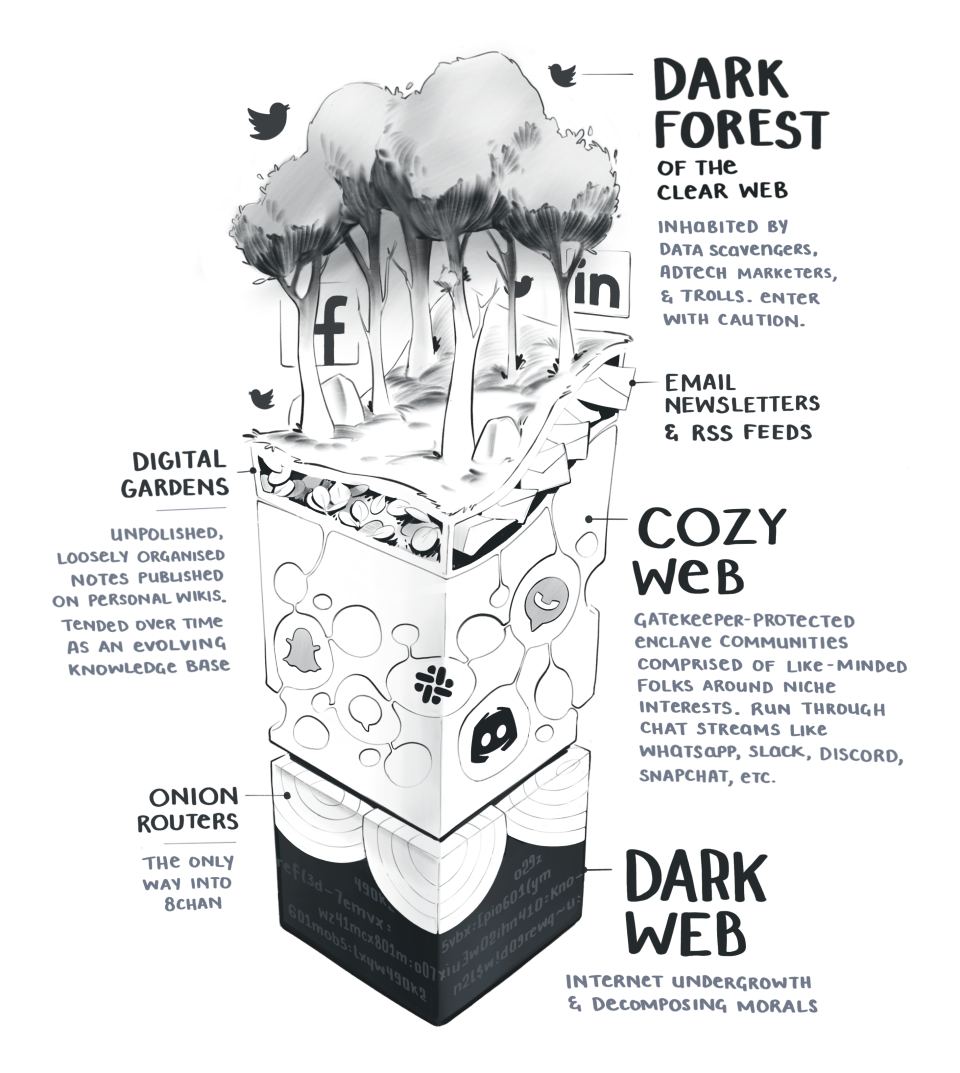
The Dark Forest Collection brings together eight independent works made by a spectrum of writers building on the same topic: ****“The Dark Forest Theory of the Internet.”
The concept was first explored in an essay of the same name by Yancey Strickler on May 19, 2019 in his personal newsletter, building on an idea explored by Liu Cixin in The Three-Body Problem and a theory generated by the Fermi paradox of how to determine the existence of alien life.
Venkatesh Rao continued the conversation with a piece called “The extended internet universe” in the Ribbonfarm newsletter on May 24, 2019, that expanded on the original concept of the Dark Forest and proposed a wider topography of the internet, including the “cozyweb.”

Writer and designer Maggie Appleton joined the conversation a few days later to add her own impressions and beautiful visualization:

Yancey wrote a follow-up piece called “Beyond the Dark Forest Theory of the Internet” on June 4, 2019.
The Dark Forest Theory stayed dark until January 2021 when Caroline Busta of New Models wrote a standout essay for Document called “The internet didn’t kill counterculture — you just won’t find it on Instagram” that explored how underground cultural practices and projects were bubbling beneath the surface in dark forests.
**Peter Limberg of the Stoa responded in a post called “Clearnet, Dark Forest, and Darknet”** on April 2021, and arranged a subsequent conversation between Caroline, Yancey, and Peter on the Stoa Podcast in June 2021 in an episode called “Counterculture is not dead, it’s just sleeping in a Dark Forest.”
Rounding out this collection, Maggie Appleton returned to the Dark Forest concept in January 2023 as a way of understanding the impact of AI on internet content in an excellent essay called “The Expanding Dark Forest and Generative AI.”
Collectively, these eight works have sparked and furthered a larger conversation about how we relate to one another online, and for understanding the changes in communication methods and safety brought on by ad-supported networks.
These conversations have only become more relevant after the acquisition of Twitter by Elon Musk, which has sent many internet communities away from the Clearnet of Twitter and into darker spaces like Mastodon and private chat groups. It may very well be that we’re at the beginning of what might be a larger Dark Forest Age with new norms on how we congregate online.
The idea of this project is to reissue and collect these eight original essays into a larger curated collection that establishes the shared authorship of this concept, and that encourages others to add their own piece to the series.
I’m proposing that the eight of us band together to form the Dark Forest Collective and publish the Dark Forest Collection record as a collaboration between us.
This collection would: